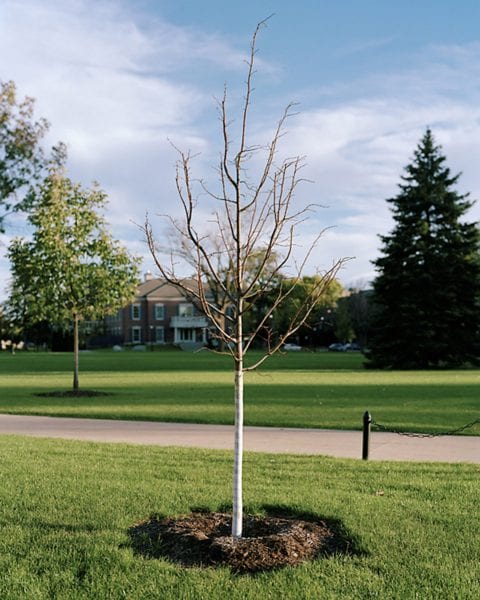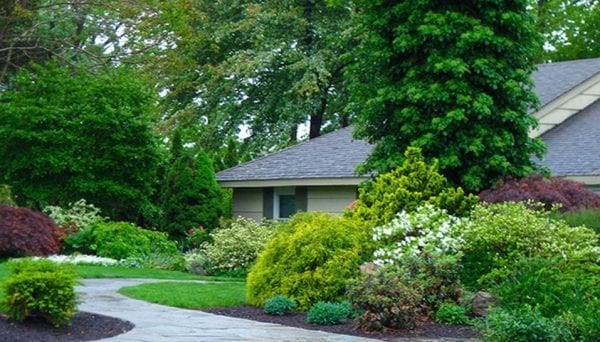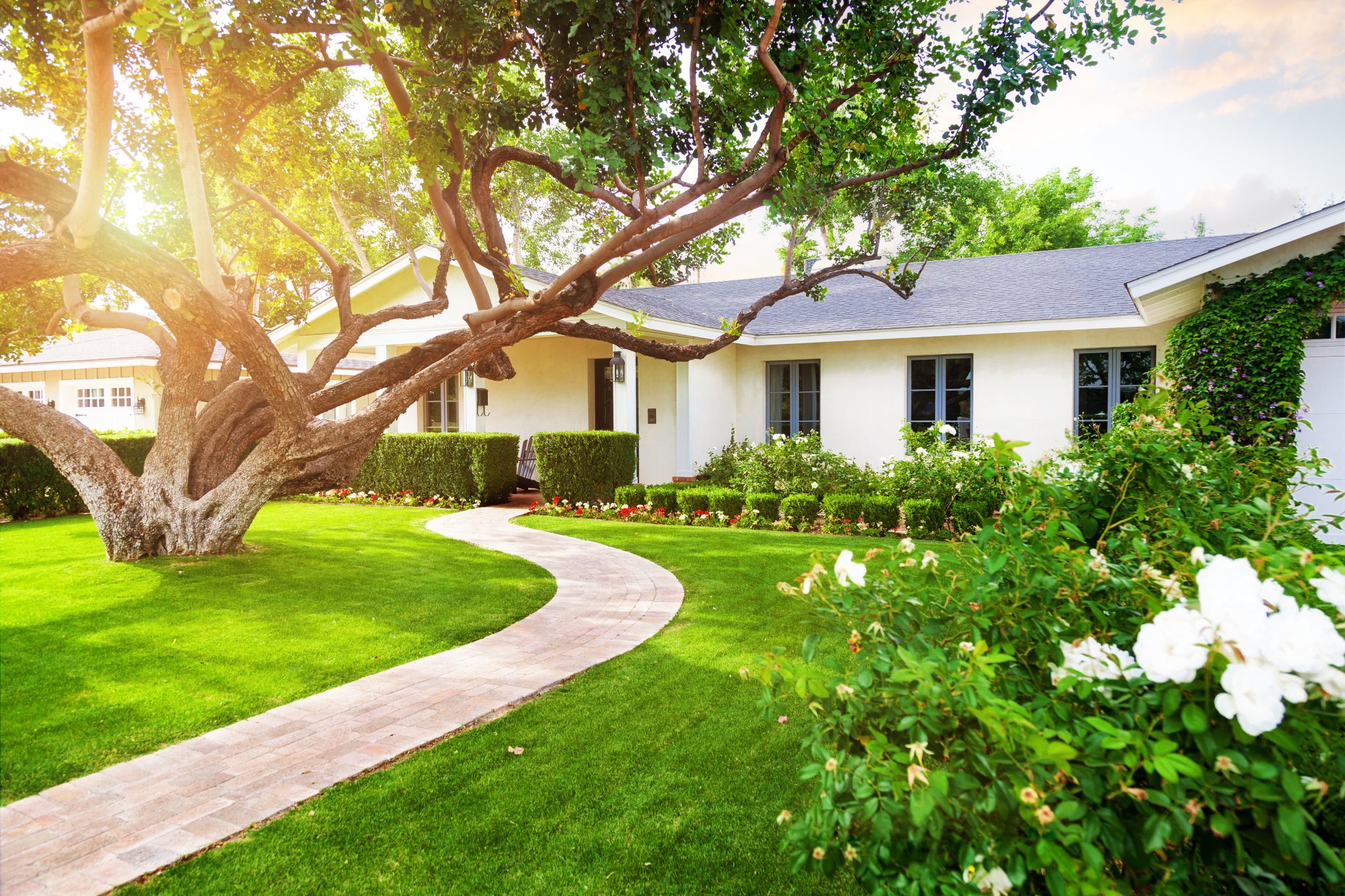Lawn & Garden

 1. Plant large deciduous shade trees on the southern, southwestern, and western sides of your house. Deciduous trees, which lose their leaves in winter, block the summer sun but allow full penetration of the winter’s warm sun. Plant trees approximately 15 feet apart and 15 feet from your house. Stick with the strong-wooded oaks (red, scarlet, or white), lindens, or ash trees to avoid wind damage to buildings. Keep these orientations free of evergreen trees that will block the winter sun. A recent study revealed that an 8°F difference between shaded and unshaded wall surfaces was equivalent to a 30% increase in insulation value for the shaded wall.
1. Plant large deciduous shade trees on the southern, southwestern, and western sides of your house. Deciduous trees, which lose their leaves in winter, block the summer sun but allow full penetration of the winter’s warm sun. Plant trees approximately 15 feet apart and 15 feet from your house. Stick with the strong-wooded oaks (red, scarlet, or white), lindens, or ash trees to avoid wind damage to buildings. Keep these orientations free of evergreen trees that will block the winter sun. A recent study revealed that an 8°F difference between shaded and unshaded wall surfaces was equivalent to a 30% increase in insulation value for the shaded wall.
2. Plant deciduous vines so they climb directly on the southern and western walls of a brick or masonry building. They block summer sun but allow the winter sun in. If you have a wood home, construct a trellis. This will eliminate rotting problems created by vines on wood.
3. Plant deciduous or evergreen trees and shrubs on the eastern, southern, and western sides of an outdoor air conditioning condenser. The hotter a condenser gets, the harder it has to work. As much as a 3% saving in efficiency of the air condition system can be realized simply by shading the condenser from the summer’s hot sun.
4. Plant large deciduous shade trees on the southern, southwestern, and western sides of outdoor activity areas to be used in summer. In addition to making these areas cooler, they provide a roof for these outdoor activity areas.
5. Plant two or more rows of evergreen trees on the north and northwestern side of your home to block winter winds. Windbreaks provide the greatest reduction in wind velocity at a distance of 5-7 times the windbreak’s height on its leeward side. Winter energy consumption has been reduced by as much as 30% by proper design and maintenance of windbreaks.
 6. Plant dense evergreen shrubs on the western, northwestern, and northern side of your house to provide additional insulation against the infiltration of cold-weather air into the structure. Evergreen vines on these walls (for brick structures) or near these walls (for wood buildings) will also help to reduce air infiltration.
6. Plant dense evergreen shrubs on the western, northwestern, and northern side of your house to provide additional insulation against the infiltration of cold-weather air into the structure. Evergreen vines on these walls (for brick structures) or near these walls (for wood buildings) will also help to reduce air infiltration.
7. Plant trees and shrubs that will act as wind tunnels and channel the southwesterly summer breezes into and through the house. This may involve selective thinning of the understory plants to promote maximum air circulation.
8. Be sure that plant masses (groups of shrubs or trees) you create will allow the natural downhill flow of cooler air. This will promote more circulation in the summer and avoid creating “cold air lakes” near your house in the winter.
9. In selecting colors for plant and construction materials, stick with the medium to darker tones. Darker tones are more efficient absorbers of the winter sun’s warmth. As long as darker-colored materials are properly shaded by deciduous shade trees, their heat retaining qualities can be moderated in the summer.
10. Where feasible, deflect air from exhaust vents, air conditioners, etc. out from intensively used activity areas with plantings. Preferably, these sources of hot air should be exhausted into northern orientations where heat excesses are not as severe.
Download a PDF of Urban Green Tips: 10 Ways to Conserve Energy with Plants, UNP-2090

